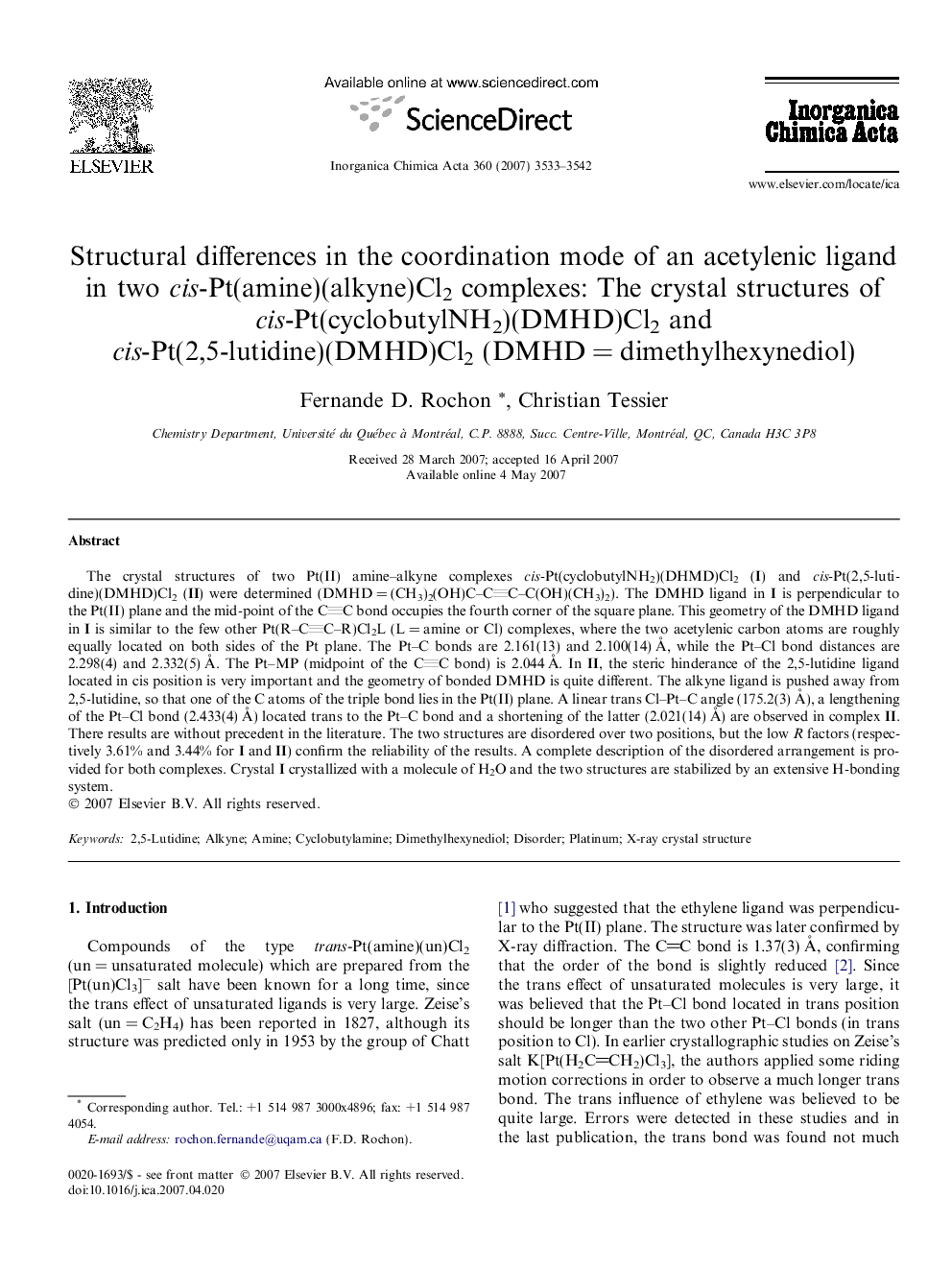| کد مقاله | کد نشریه | سال انتشار | مقاله انگلیسی | نسخه تمام متن |
|---|---|---|---|---|
| 1309518 | 975210 | 2007 | 10 صفحه PDF | دانلود رایگان |

The crystal structures of two Pt(II) amine–alkyne complexes cis-Pt(cyclobutylNH2)(DHMD)Cl2 (I) and cis-Pt(2,5-lutidine)(DMHD)Cl2 (II) were determined (DMHD = (CH3)2(OH)C–CC–C(OH)(CH3)2). The DMHD ligand in I is perpendicular to the Pt(II) plane and the mid-point of the CC bond occupies the fourth corner of the square plane. This geometry of the DMHD ligand in I is similar to the few other Pt(R–CC–R)Cl2L (L = amine or Cl) complexes, where the two acetylenic carbon atoms are roughly equally located on both sides of the Pt plane. The Pt–C bonds are 2.161(13) and 2.100(14) Å, while the Pt–Cl bond distances are 2.298(4) and 2.332(5) Å. The Pt–MP (midpoint of the CC bond) is 2.044 Å. In II, the steric hinderance of the 2,5-lutidine ligand located in cis position is very important and the geometry of bonded DMHD is quite different. The alkyne ligand is pushed away from 2,5-lutidine, so that one of the C atoms of the triple bond lies in the Pt(II) plane. A linear trans Cl–Pt–C angle (175.2(3) Å), a lengthening of the Pt–Cl bond (2.433(4) Å) located trans to the Pt–C bond and a shortening of the latter (2.021(14) Å) are observed in complex II. There results are without precedent in the literature. The two structures are disordered over two positions, but the low R factors (respectively 3.61% and 3.44% for I and II) confirm the reliability of the results. A complete description of the disordered arrangement is provided for both complexes. Crystal I crystallized with a molecule of H2O and the two structures are stabilized by an extensive H-bonding system.
The crystal structures of cis-Pt(cyclobutylNH2)(DHMD)Cl2 (I) and cis-Pt(2,5-lutidine)(DMHD)Cl2 (II) were determined (DMHD = (CH3)2(OH)C–CC–C(OH)(CH3)2). The DMHD ligand is perpendicular to the Pt(II) plane and in I the mid-point of the CC bond is in the square plane. In II, one of the C atoms of the triple bond lies in the Pt(II) plane. The two structures are disordered, but the results are reliable.Figure optionsDownload as PowerPoint slide
Journal: Inorganica Chimica Acta - Volume 360, Issue 11, 1 August 2007, Pages 3533–3542